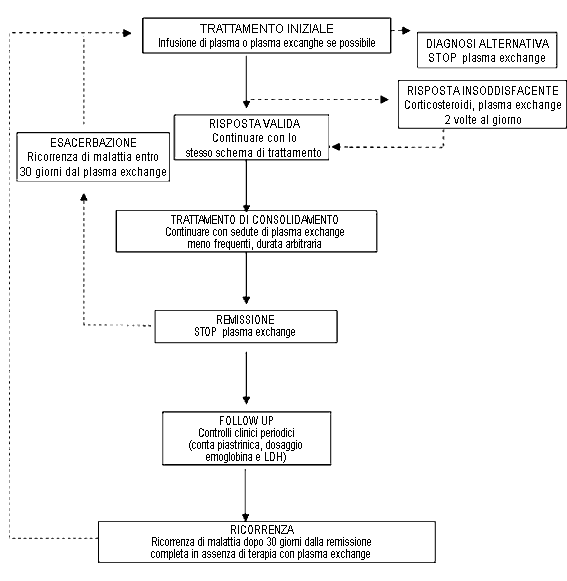|
|
|
x
|
 figura 1
figura 1 |
|
Algoritmo
per la gestione dei pazienti affetti da TTP (George JN, Blood
2000; 96: 1223-29) |
|
|
 |
 |
|
|
|
|
| |
|
|
|
 |
| Solid arrows represent an ideal course;
broken arrows represent common variations. Once treatment
is initiated, physicians must remain alert for alternative
diagnoses. A "poor response" is not easily defined.
It may indicate persistent, severe thrombocytopenia and
hemolysis after several days of plasma exchange, or it
may indicate recurrent, acute thrombocytopenia and hemolysis
after an initial good response, or the appearance of new
neurologic abnormalities, while the patient is continued
on once daily plasma exchange. Consolidation treatment
is empirical and is based only on observations that exacerbations
of TTP are common when plasma exchange is stopped. Other
considerations, such as complications with venous access,
may override a decision to extend treatment. In many patients,
repeated reinitiation of daily plasma exchange is required
before durable complete remission is established. No maintenance
treatment or specific diagnostic test appears to prevent
or predict a relapse. The definitions of exacerbation
and relapse, as occurring within or beyond 30 days of
remission, are arbitrary. |
|
|
|
|
2014 © Fondazione L.Villa
|
|
|
 |
 |
|